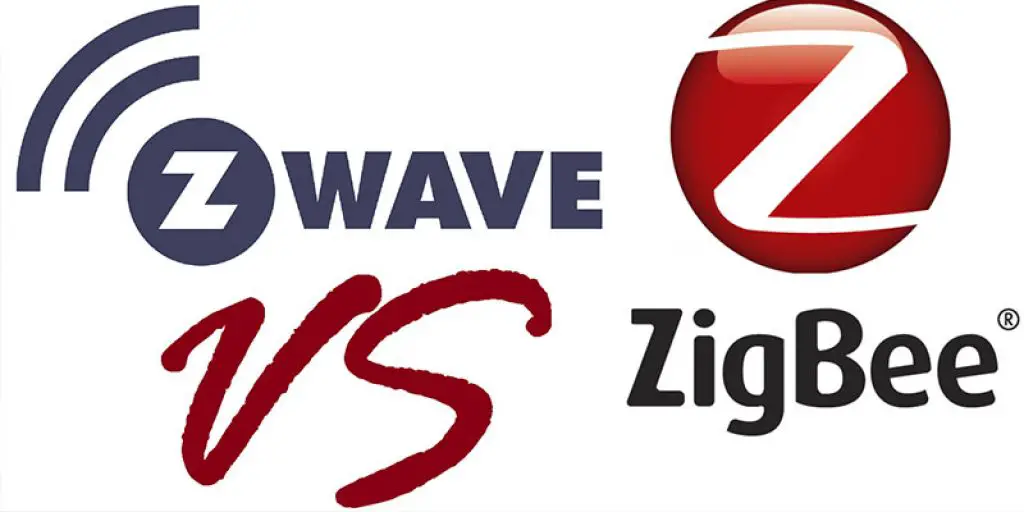Zigbee VS Z-Wave – Which is Better?: A good network connection and some really smart home devices can turn your little hut into a world of technological smartness, which makes your life easier and faster. While choosing devices for your smart home, Wi-Fi and Bluetooth are two of the most common options that we look forward to. However, there is more to the story!
Zigbee and Z-wave are two “not so famous” technologies that help you in making your home smarter. They work differently than Bluetooth and Wi-Fi as they connect to a mesh router.

Inspiring your journey, one story at a time. #LifeFalcon.
The signals and data are transmitted from the hub to a device and then another device and then to another.
This makes these two perform more efficiently as the signals can reach the devices which are out of the hub’s range as well.
They allow the user to take control of various home automation devices in a very proficient manner.
We will be looking at the features, pros and cons, compatible devices of both Zigbee and Z-Wave. If you are interested in buying a Zigbee or Z-Wave Controller, you should understand both technologies. And we have made it quite easy for you.
Table of Content
Zigbee and Z-Wave – Difference Summary
| ZIGBEE | Z-WAVE | |
| Technical Foundation | IEEE.8.02.15.4 | No International Standard |
| Founded Union | Zigbee Alliance | Z-Wave Alliance |
| First Launched in | 2013 | 2013 |
| Use of Band | 2.4 Ghz | Sub 1G |
| IC Provider | TI, Freescale | Sigma Designs |
| Sensitivity | -98 dBM | -101 dBM |
| Operating Range | 35-65 ft | 100-120 ft |
| Standard Data Rate | 20 Kbps | 9.6 Kbps |
| Max. Data Rate | 250 Kbps | 100 Kbps |
| Frequency | 915 Mhz/2,4 Ghz | 908 Mhz/2,4 Ghz |
| Reliability | Better | Good |
| Encryption | AES 128 | AES 128 |
| Cost to build Devices | Lower | Higher |
| Works in all countries | Yes | No |
| Interoperability | Good | Better |
| Subject to Wi-Fi Inter | Yes | No |
| Compatibility with STBS | Yes | No |
| Max. no. of Nodes | 6500 | 232 |
| Practical no. of Nodes | 50 | 10 |
| Max. no. of Hops | 30 | 4 |
| Modulation | OQPSK | GFSK |
| Transmitter Power | 8 dBM | 0 dBM |
| Link Budget | 106 dBs | 101 dBs |
| Network Type | Mesh | Mesh |
We now have an idea about both the devices, how they work, and what kind of coverage do they offer.
Thus, we can now compare Zigbee vs Z-wave so that we are able to understand how they differ from each other and which one is a better choice to make.
- Z-wave carters to smart homes specifically. It allows you to connect up to 232 devices which do seem sufficient or more than sufficient for someone who has to use it at home. On the contrary, Zigbee is able to connect with up to more than 65000 devices and also supports innumerable applications as well. Zigbee is more of an open standard whereas Z-wave carters the perfect smart home needs.
- Z-wave runs on 915 MHZ ISM band in the United States and 868 MHZ RIFD band in Europe. On the other hand, Zigbee runs on a standard 2.4 GHz ISM band which makes it more vulnerable to interferences. There is a larger possibility of interference on Zigbee. However, Z-wave is slower than Zigbee. The data rates of Zigbee are 40-250 kbps whereas Z-wave has a data rate of 9.6-100 kbps.
- Taking about the frequency, Z-Wave works on 900 MHz where Zigbee on 2400 MHz.
- Zigbee has an open standard which means that it has huge developer support for radios. On the other hand, Z-wave has a proprietary radio system.
- Z-wave has a limit of four hops. On the other hand, Zigbee has 15 hops which allow it to connect easily in larger places too.
Introduction to Z-Wave & Zigbee
Smart homes are becoming more and more popular as more and smarter devices are coming to the market.
Z-wave & Zigbee are technologies that help these smart devices talk to each other.
In short, a Z Wave or Zigbee network is made up of a controller and smart devices. The smart devices send reports of any events to the main Zigbee or Z-Wave controller.
For example, if any smart switch got activated (like a light bulb turned on, or gate lock opened, or Wifi sprinkler system turned off), then the controller processes that device input and routes it to a user-defined scene that tells the controller what to do with that event.
A simple scene might be, if a gate lock opens, turn on the security camera.
A complex scene might be if the video projector is turned on, dim the lights in the media room, close the curtains, and lower the projector screen.
It’s simply amazing how this technology works. If you want to automate your home, then you must know of all the different technologies that you can utilize. There is a lot more than just Wi-Fi and Bluetooth.
Zigbee and Z-wave are two, extremely incredible wireless technologies that can be used for making your home smarter.
They both have their own sets of advantages, disadvantages, uses and consumer bases. The decision of whether Z-wave is a better option or Zigbee is the smarter one to opt for, depends on which one suits your needs. Everyone has different smart home needs and you need to pick the best technology in accordance with those.
Therefore, let’s dive into the world of Zigbee and Z-wave and see which one is suitable for whom and how they are different than the regular Wi-Fi and Bluetooth wireless technologies.
Before Zigbee vs Z-wave lets look at them both separately.
What is Z-WAVE Technology?

Z-wave came into existence in 2004 and was formed by a company called Zensys.
Zensys was later on bought by the Sigma designs in 2009. Z-wave is capable of handling 232 devices at one time and uses a frequency of 908.42 MHZ.
It is quite easy to setup Z-wave and uses it as each item in the network has its very own node ID.
Thus, this makes it a lot secure as well.
Z-wave is being used immensely in smart homes nowadays.
The stats show us that 35 million Z-wave compatible units have been sold till yet.
According to Michael Wolf, the founder and chief analyst of Next Market Insights, Z-wave has better interoperability than Zigbee.
Features
- Mesh Networking (Each device is connected to one or more devices)
- Two-way wireless communication (Devices transmit and receive signals from/to other devices)
- User-friendly
- Easy to control
- High bandwidth (more range of frequencies – means more connectivity to devices)
- Regular updates about your smart home devices
- Allows to connect up to 232 devices
Pros. & Cons.
PROS:
- Here are some features which are extremely admired by the users of Z-wave and which make it a good choice to make:
- It uses a great frequency which helps in ensuring the fact that it won’t be interfering with any other wireless router at all.
- Z-wave is very user-friendly. You don’t need to have a detailed insight into technological devices to set it up. You can do so pretty easily and fast too. The user manual along with it helps in setting up the device right away.
- The major selling point of Z-wave is that it has wonderful compatibility with almost all kinds of devices. Almost all smart home devices can easily connect with Z-wave.
CONS:
- Here are some drawbacks of Z-wave:
- It requires a battery change after a little while. They die out sooner than the Zigbee and this is a huge letdown for people who wish to use it a lot.
- Z-wave is a little costly. It might be out of range for some people.
Who is it best for?
Your home sweet home is the best place to use Z-wave. It is also considered a good option for small businesses.
It might not be the best bet for people who want to use it within a large building or want to step outside.
Using it outdoor might not bring in the best of user experience.
Therefore, it is best for people who want to use Z-wave within their residential places.
What is ZIGBEE Technology?

The style inspiration of Zigbee kicked in the world of technology in the 1990s.
This digital radio-style network started off in the ’90s but became a prominent device in 2004.
Even this formal introduction and classification was done in 2004.
Further advancements were done to Zigbee in 2006 which helped it in earning a huge place in the wireless network globe.
Zigbee is an open standard-based wireless technology and promises to deliver low power consumption to the users.
The mesh technology is impeccable of Zigbee and makes it a great choice to make for home automation.
Zigbee is also considered secure or it is safe to say that it is more secure than Z-wave as it is an open standard based tech.
It is also termed as robust and reliable by Ryan Maley who is the director of strategic marketing for the Zigbee Alliance.
Features
Zigbee is gaining popularity in the commercial and residential industry as it carries some amazing features which make it a good wireless technology option to make.
- Centralization control system
- Monitoring activities
- Remote control device
- Low power frequency
- Low power consumption
- Bluetooth enable
- Sleep mode
- Long-lasting battery
- No limit to the number of devices you can connect it to; goes up to 65,000
Pros. & Cons.
Zigbee is a highly appreciated wireless technology. Even when a lot of people don’t know about it; people who use it, have raved it with good and positive reviews mostly.
Here are some of the perks that it has to offer to its users, which make it a good choice!
PROS:
- Zigbee has a low power consumption. The batteries are pretty much long-lasting and you will enjoy using it as it won’t die out in between.
- It also costs less than Z-wave which makes it an affordable choice to make.
- The range of connectivity with Zigbee is pretty much fascinating. It can hop up to 15 times which allows you to use it in larger buildings and outdoors as well.
- There is absolutely no limit to the number of devices that can be connected with Zigbee. You can connect as many as you want. This usually depends on your type of usage but no limitations are always better and more fun.
CONS:
- It is specifically great for large-scale use and this makes it a bit of a headache for people who wish to use it at home. Setting it up is a bit of a hassle.
Who is it best for?
Zigbee is the best bet for tech-savvy people. It is wonderful for people who wish to use it for a project due to its amazing scalability.
As it is a low cost, it can benefit large-scale businesses and projects a lot.
The compatibility can be a bit of an issue but if you go through a bit of troubleshooting, then it is fine to run on numerous devices and gives you a huge range too.
Zigbee vs Z-wave – Things in common
As there are some differences, there are also some common points in Zigbee vs Z-Wave. As both of these are wireless technologies, you obviously find some similarities in them as well.
Here are some things that are common in Zigbee vs Z-wave:
- Both of these technologies are mesh networks.
- These wireless technologies are mostly used in some specific areas. For instance, both are used in security systems and urban smart grid controllers.
- Both of them use the same protocol; IEEE 802.15.4 low-rate personal area network (LR-PAN) for the unified physical layer (OSI Layer 1).
Z-Wave and Zigbee Compatible Devices
There is not a huge difference in the list of compatible devices of Zigbee vs Z-wave. Where Zigbee has almost 2500 devices that are compatible, from 400 members of its alliance, Z-wave is no far away with 2400 compatible products from 700 members.
Zigbee Compatible Devices
Here is a list of devices or products that are compatible with Zigbee. It consists of some really famous and great brands or companies that almost all of us are aware of:
- Samsung Smart Things
- GE Appliances
- Yale Smart Locks
- Honeywell Thermostats
- Philips Hue
- ADT Security Hub
- LG Smart Things
- Ikea Tradfri
- Hive active heating and accessories
- Amazon Echo Plus; Amazon too
- Sengled Smart Lights
- Wink Hub
- Somfy Blinds and Drapery Motors
- Belkin WeMo Link
- Yale Smart Locks
Z-wave Compatible Devices
Here is a list of some really amazing products that are compatible with Z-wave:
- Samsung Smart Things
- Wink Hub
- GE Appliances
- LG Smart Thing
- Somfy Blinds and Drapery Motors
- Yale Smart Locks
- August Smart Locks
- ADT Security Hub
- Honeywell Thermostats
- Kwikset Smart Locks
- Hogar Milo
- Logitech Home Harmony Hub Extender
Z-wave has more members than Zigbee. It has around 700 companies whereas Zigbee has 400.
This opens up Z-wave for further device compatibility in the future.
However, Zigbee wins with the fact that it also supports battery-operated smart home devices and even light switches.
Z-Wave and Zigbee Controllers
Now that we have learned all about the Z Wave & Zigbee technology, let’s talk about some of the best controllers which supports them.
Things to consider before buying
- Total no. of smart devices you want to control.
- Combination of different protocols and their compatibility with the controller you’ll buy.
- How much do you want to customize your home? The more you want, the costlier the controller will get.
So which one to choose? Zigbee or Z-wave?
So now we are to our final question, which one wins the Zigbee vs Z-Wave battle?
We have done a detailed insight into both the wireless technologies individually and have compared them with one another too.
If you are super clear and have sorted out your needs for a smart home then you probably know what you are looking for and which one of these technologies is going to be your best bet.
Zigbee and Z-wave provide short to the medium range by their nature; that is how they are made. Some companies have stated that they had to put up 3 times more mesh nodes in their building so that they could make their Zigbee work better.
If you have a workplace to handle then you can clearly understand that costs like these can add up to your budget quickly.
However, the mesh is not a bad option completely. If you look towards your residential places; then they can be a pretty much good option to make.
Homes usually require small to medium range coverage and it makes your smart home devices run pretty fine too.
These wireless technologies won’t be providing a complete and wonderful flow of signals in a huge building.
But for your home; you know that you can make your smart home devices run just fine with Zigbee and Z-wave.
In the end, it all really comes down to the fact that what you need. What are you looking for in your wireless technology and how many smart home devices do you want to run?
What is your budget and how much are you willing to spend is also very crucial to sort out before you make a pick.
The answer is highly dependent on the range you are looking forward to and are in dire need of.
Also, make sure that you check on the compatible devices and brands before you make your pick.




















